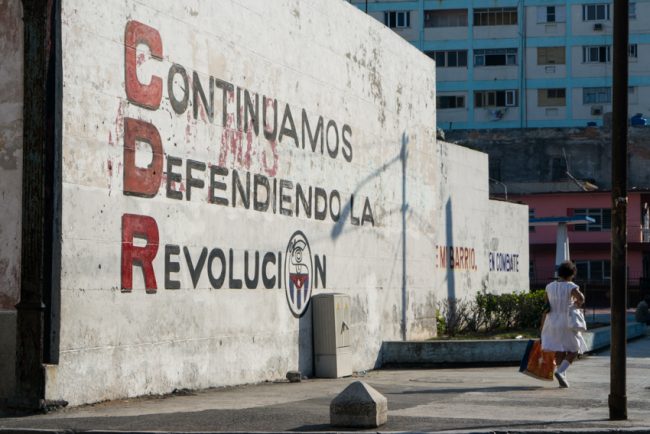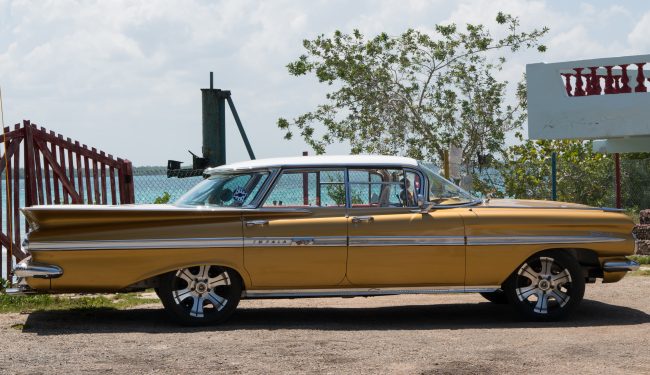It will not surprise you to learn that there is much more to Cuba than mojitos and cigars, Castro and Che or Hemingway and The Old Man and the Sea. A visit to the island is an undeniably enriching experience with enormous vibrance, variety and culture. I visited over the summer with several friends from college, and we spent time in Havana, Trinidad (a well-preserved city on the Caribbean side of the country, originally built on the sugar trade and now a UNESCO world heritage site) and Cienfuegos, a town with rich French and Spanish history dubbed “La Perla del Sur” – the “Pearl of the South.”
Make no mistake, Cuba is a country of ups and downs. For tourists and locals alike, life can be difficult. The 56 year US trade embargo has taken perhaps the greatest toll, preventing trade and investment and leaving significant food and commodity shortages that remain to this day. After the revolution in 1959, food rationing was implemented to ensure fair distribution, and today the majority of families must buy food through their Libreta de Abeastecimiento or supplies booklet, which guarantees them, per month, around eight kilograms of sugar, eight kilograms of rice, one cup of cooking oil, six eggs and around two kilograms of meat every fortnight. This is not sufficient for a whole month, and so Cubans must travel to various different shops across town to acquire the products they need. It is particularly difficult to find dairy products, certain fruit and vegetables, hardware and toiletries. Toilet paper is notoriously scarce and travelling Cubans often bring suitcases full of it upon return to the country.
Despite the intense struggles and problems they have endured, Cubans exhibit an indefatigable spirit and an apparently omnipresent friendliness.
All this means that, for tourists, the best way to eat in Cuba is to enjoy one of the many emerging restaurants, the private paladares. These offer a choice of Creole, Italian and Spanish cuisine, including shrimp, white fish and pork dishes. Also sensible is to dine with locals at the casa particulares, the Cuban take on bed and breakfast. These are charming, usually old-style houses run by locals for rent by tourists, and offer a considerably more affordable, practical and authentic experience – not to mention providing local families with an important source of income. It is important to note that there are two forms of currency in Cuba, one for locals, the Cuban peso or CUP, and one for tourists, the peso convertible or CUC. The CUC’s value is glued at 1:1 to the US dollar, and though items tend to be more expensive when payed for in this currency, the vast majority of tourists will only need to use this type. In the casa particulares, rooms tend to be priced at around 25CUC per night, and in the three different houses we stayed in, we were treated exceptionally well, showed every possible kindness and given all necessary advice and recommendation.
Havana is a stunning city with character, but is in some ways rough around the edges, with numerous crumbling buildings and notoriously rubbish-strewn streets. Perhaps this is part of its charm. It is, however, the architecture that stands out, with stunning buildings that incorporate varying art deco, French and Italian influences. The historic Habana Vieja, the old town, is filled with landmarks including the imposing Capitolio – “the Capitol” – the Museo Nacional de Bellas Artes, the Museum of the Revolution and the picturesque Cathedral Square. These are highly impressive, but the city’s most impressive aspects are its music, culture and most of all, its people. Despite the intense struggles and problems they have endured, Cubans exhibit an indefatigable spirit and an apparently omnipresent friendliness. Yes, there are people trying to offload dodgy cigars or asking you to follow them to a nearby bar or restaurant, but Cubans are good humoured, helpful and charming people. The population is a melting pot of cultures, and the majority descended from either African slaves or Spanish settlers. This diversity has been a success, with racial tension all but absent, and diversity embraced.

The diversity in Cuban culture finds expression in the musical variety of the country, and this is most apparent in Havana. Notable examples include Afro-Caribbean jazz, salsa, soukous, West African Cuban fusion and Spanish fusion like flamenco and rhumba. Walking the streets of Habana Vieja you will hear live music on almost every corner, and in residential areas families can often be heard playing music together, either to mark birthdays or to celebrate festivals. Similarly, Cuba has produced numerous musicians, like Benny Moré, the celebrated tenor, and Ibrahim Ferrer, who later in life became a founding member of the internationally successful Buena Vista Social Club. This group would become perhaps Cuba’s musical icon, creating the highly successful 1997 studio album that sold around 12 million copies.
A picture of Havana would not be complete without the classic cars that fill its streets. Almost every taxi or private car is over 50 years old, with old Dodge, Ford, Chevrolet, Cadillac and Plymouth vehicles being driven in often excellent condition, albeit with modern replacement engines. When Castro came to power in the revolution, his policies forbade private ownership and acquisition of cars. They could only be bought and sold by the government. And since the government could not fund the import of cars from Asia or Europe, the vast majority kept the American cars from the 1930s, 1940s or 1950s that were passed down from generation to generation. A personal Havana highlight was an open-top convertible taxi tour, which took us from central Habana Vieja to the Plaza de la Revolucíon, where frequent Castro and Guevara rallies used to take place, and from there to the Malecón, a broad esplanade stretching five miles along the Havana coastline. These chrome-covered cars lend a further sense that this city is stuck in a 1950s time warp, a sort of emblem of anachronism. Combine all this with the lively salsa energy that emerges from the clubs, cabaret bars and music-filled streets, and you have a taste of the Havana experience. It is no wonder that Hemingway and other leading lights found themselves at home in Havana.
The chrome-covered cars lend a further sense that this city is stuck in a 1950s time warp, a sort of emblem of anachronism.
Trinidad is situated on the Caribbean coast, built upon the wealth of the 19th century sugar and slave trade, and the ornate Spanish colonial mansions, churches and squares demonstrate the sheer scale of its wealth. The streets are excellently preserved, attractively cobbled throughout, and Trinidad, like Havana, is a town that resonates with history. A few kilometres to the north of the town are the lush plains of the Valle de los Ingenios, where the sugar plantations that gave rise to Trinidad’s wealth were located – today, you can see the abundant ruined sugar mills from the 19th century either hiking or on horseback. Nowadays the town is predominantly a tourism and tobacco economy, and nearby Playa Ancón beach, a tranquil white jewel, is only a 15 minutes drive or a 40 minutes bike ride away. Museum-wise, the town is quite impressive too – the Architectural Museum is the pinnacle, with well-preserved 18th and 19th century art and architecture exhibits and a beautiful panorama of the old city at the top of the building’s tower (after several winding staircases). The National Museum of the Struggle against Bandits is also worth a look, which details the rebel efforts against the “bandits”, the CIA-backed counter revolutionaries who defied Castro, Che Guevara and their forces in the neighbouring Escambray mountain range, after General Batista had fled Cuba. Interesting exhibits include part of a U2 spy plane shot down by the revolutionaries and the machine gun and hammock of Guevara himself from his time fighting in the region.
Cubans have unsurprisingly mixed views on the recent improvements on relations with the US. American sanctions cost Cuba $4.6 billion last year, and while Raul Castro and Barack Obama made world headlines by announcing their ambition to ease pressure between their respective countries, the embargo remains. Yes, commercial flights, communications and diplomacy between the US and Cuba have been restored, with regular flights taking off for the first time in more than half a century last week. But will this trend of improved relations mean a change to this time-warp country? Some fear that the vibrance and colour that Cuba has in spades may be lost to American hotel, cafe and fast-food chains. Sure, now is probably the best time to experience the country in all its Cuba Auténtica glory, but it seems improbable that the socio-political makeup of the country will change rapidly, and both citizens and politicians seem reluctant to let slip the ideas and spirit that, as Jose Ramon Machado Ventura, the second secretary of the Cuban Communist Party put it, “kept Cuba alive”. Ordinary Cubans on the whole have maintained their love for Fidel Castro and continue to respect the post-revolution order that he put in place. But no doubt, if the impending boom in Cuban tourism and infrastructure is centred on the warmth and camaraderie of its people, then the country will become an even more inviting destination for all. This will surely be to its benefit.







